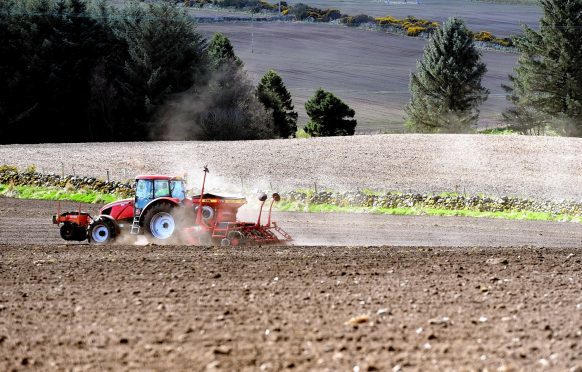The amount of spring barley being grown by Scots farmers remains at a 10-year low, according to AHDB Cereals and Oilseeds.
Figures from the levy body’s annual planting and variety survey reveal the estimated area for spring barley remains virtually unchanged from 2016 at 590,000 acres.
AHDB said the reduced acreage in 2016 was partly in response to large carryover supplies from previous years and a temporary decline in malting demand in some areas during the 2015/16 season.
It said the final output for 2017 would depend on yields, however even average yields would result in an increase on production from last year.
Figures for this year’s wheat acreage reveal a 5% reduction in the area planted to 257,000 acres.
Winter barley acreage is up 6% to 126,000 acres, while the area of oats planted is up 12% to 86,000 acres.
Oilseed rape production is also set to be up thanks to a 6% boost in the planted area to 81,500 acres.
AHDB said figures for farms south of the border revealed English growers had chosen to grow 9% more spring barley in a bid to tackle black grass issues and also as a result of reduced oilseed rape plantings.
Delving more closely into the Scottish data, the levy body said: “Overall, malting barley varieties with full approval from the Institute of Brewing and Distilling for harvest 2017 account for 57% of the total Scottish barley area.
“This is down from 2016 when varieties with full approval for that harvest accounted for 64%.”
Of the area of wheat planted, Scots farmers chose to grow more nabim Group 3 varieties, with plantings up to 14% from 8% previously, largely instead of soft Group 4 varieties.
The levy body said the area of oats planted was at its highest level since 1989. However, unless yields are above average, production may decline on 2016 levels.
Record yields in 2016 resulted in Scottish oats production being at a 39-year-high with an estimated 201,000 tonnes of the grain produced north of the border.
Although this year’s Scottish oilseed rape area is up on last year, it is still below the 2015 planted area of just under 89,000 acres.
AHDB said crops in Scotland were likely to account for a greater proportion of the UK total this year, due to the crop’s continuing decline in England.
The AHDB figures are the results of a survey of 6,482 farms across the UK, including 1,800 in Scotland.
It attracted a 44% response rate and farmers were asked to submit information on intended harvest areas and the area harvested last year.
